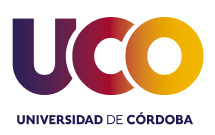Photosynthesis and photoprotection regulation in marine cyanobacteria and its potential applications (H2020-MSCA-IF-2017-GF-795070)
Carotenoids evolved in cyanobacteria as components of membranes providing a structural role and likely influencing permeability to oxygen. Then they became complexed with proteins that enabled a great diversification in their functions to include both 1O2 quenching and light harvesting in photoprotection.
Photo-cy-apps is an ambitious project with the purpose of gaining a comprehensive understanding of the role of OCP and the new HCPs and CTDHs on photoprotection in marine cyanobacteria, with their potential application. The ecological importance of these microorganisms reinforces the relevance of this project, since the putative protecting role of OCP in a major subset of marine picocyanobacteria could be a key factor for their abundance, particularly in regions close to the surface of the ocean, subjected to high irradiances.
This project brings two research laboratories together with different and complementary expertise, the Kerfeld lab at the Plant Research Laboratory (PRL) at Michigan State University (MSU and LBNL) in the USA with the expertise in bioinformatics, biophysics and structural biology, and the Garcia-Fernandez lab at the University of Cordoba (UCO) in Spain with the expertise in physiological studies in marine cyanobacteria, to determine the role of these car-binding proteins in marine photoprotection and provide the foundation for the Fellow for her independent career after this interdisciplinary training-through research.
General objectives
1. Biochemical and structural characterization of OCP, HCPs and CTDH from marine Synechococcus and C. watsonii.
1.A. Protein production in E. coli and in cyanobacteria.
1.B. Pigment selectivity using mass spectrometry
1.C. Structural and biophysical characterization.
2. Functional characterization of OCP, HCPs and CTDH.
2.A. Non-photochemical quenching assays.
2.B. Determine the rates of O2 quenching.
2.C. Photoactivation of the different Synechococcus OCPs.
3. Discovering new functions provided by HCP-CTDH interactions.
4. Physiological characterization of OCP, HCPs and CTDH in marine cyanobacteria
4.A Determination of the gene expression and accumulation of these proteins.
4.B. Determination of the carotenoid profile in the different species.
Role of the University of Cordoba
Objectives 4A and 4B, described above, will be carried out by Dr. Domínguez-Martín in the third year of this project, at the return phase.
- Determination of the gene expression and accumulation of these proteins. Garcia-Fernandez Lab (the lab at the return phase) has the access to many different strains of marine cyanobacteria. The gene expression and the accumulation of the OCP, HCPs and CTDH will be tested under different conditions (e.g. light, key nutrients, temperature) to complete the in vitro characterization. Two different OCP antibodies, one to Arthrospira maxima OCP and the other to Synechocystis OCP will be kindly provided from Kerfeld lab. The Garcia-Fernandez lab has a SigF mutant for Synechococcus WH7803 kindly provided by Dr. Wolfgang Hess (University of Freiburg, Germany). I will use this mutant to determine the accumulation of the proteins in comparison to the wild-type to gain insights on the regulation of these proteins.
- Determination of the carotenoid profile in the different species. Using the mass spectrometry and the previous experience during the outgoing phase the carotenoid profile content will be determined in these cyanobacteria. They will be studied under different conditions (e.g. light, key nutrients, temperature).
Supervisor: José Manuel García Fernández e-mail: jmgarcia@uco.es
Investigadora Principal: María Agustina Domínguez Martín e-mail: doming64@msu.edu
Página web del proyecto: http://www.uco.es/grupos/adapromet/Home.html

